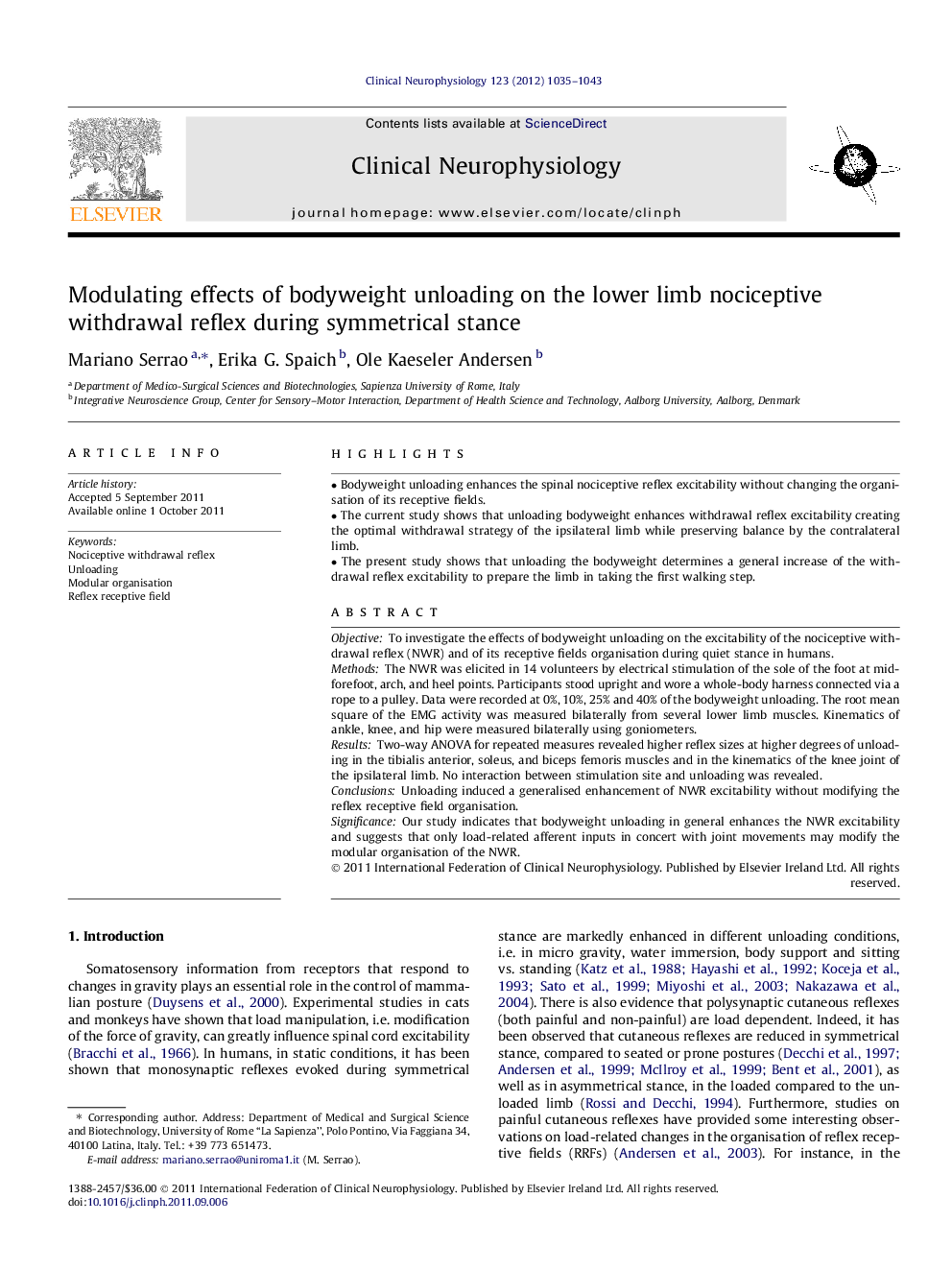| Article ID | Journal | Published Year | Pages | File Type |
|---|---|---|---|---|
| 3045298 | Clinical Neurophysiology | 2012 | 9 Pages |
ObjectiveTo investigate the effects of bodyweight unloading on the excitability of the nociceptive withdrawal reflex (NWR) and of its receptive fields organisation during quiet stance in humans.MethodsThe NWR was elicited in 14 volunteers by electrical stimulation of the sole of the foot at mid-forefoot, arch, and heel points. Participants stood upright and wore a whole-body harness connected via a rope to a pulley. Data were recorded at 0%, 10%, 25% and 40% of the bodyweight unloading. The root mean square of the EMG activity was measured bilaterally from several lower limb muscles. Kinematics of ankle, knee, and hip were measured bilaterally using goniometers.ResultsTwo-way ANOVA for repeated measures revealed higher reflex sizes at higher degrees of unloading in the tibialis anterior, soleus, and biceps femoris muscles and in the kinematics of the knee joint of the ipsilateral limb. No interaction between stimulation site and unloading was revealed.ConclusionsUnloading induced a generalised enhancement of NWR excitability without modifying the reflex receptive field organisation.SignificanceOur study indicates that bodyweight unloading in general enhances the NWR excitability and suggests that only load-related afferent inputs in concert with joint movements may modify the modular organisation of the NWR.
► Bodyweight unloading enhances the spinal nociceptive reflex excitability without changing the organisation of its receptive fields. ► The current study shows that unloading bodyweight enhances withdrawal reflex excitability creating the optimal withdrawal strategy of the ipsilateral limb while preserving balance by the contralateral limb. ► The present study shows that unloading the bodyweight determines a general increase of the withdrawal reflex excitability to prepare the limb in taking the first walking step.
